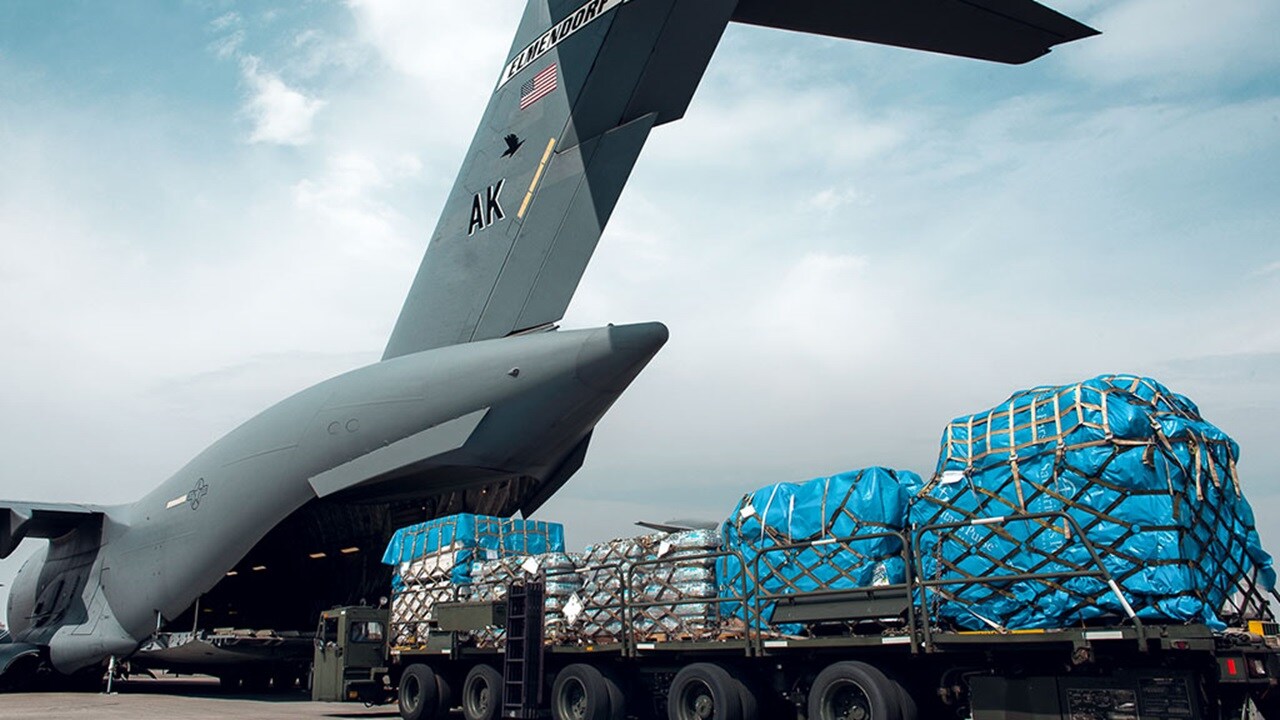Intermodal transportation is a popular term in logistics these days, having come full circle from the days of its first use all the way back in the 1780s. While the initial conception of intermodal transportation utilized horse-drawn carriages and soon lost popularity because of impracticality, the modern version is quickly becoming a critical component of supply chains all over the world due to its numerous advantages.
Read on to learn why intermodal logistics might just be the most important development in logistics since the horse-drawn carriage.
The definition of intermodal
Intermodal transportation is the process of moving cargo using multiple methods of transportation including trains, trucks, ships and airplanes, without requiring additional handling of the cargo when changing modes of transport. This is made possible through the use of standardised containers, which allow easy transfer from one transport mode to another. For example, an intermodal shipment could be loaded onto a truck, passed off to a railway station, taken to a port and loaded onto a barge, eventually making its way to the destination country without ever changing containers. This would all happen with just a single customs inspection en-route. For imported goods, the opposite route works just as effectively.
Intermodal is on the rise
Intermodal transportation is especially important in areas like Asia Pacific, where the regional geography makes multiple transport methods more of a necessity than a luxury. In a region with many nations, including those with large land area like China, as well as many islands that are only accessible by sea or air, logistics relies on intermodal transportation for both reach and efficiency. According to a 2022 survey by Statista, 66% of China’s shopping takes place online, with expected compound annual growth rate of 10.32% between 2022-2030. This, in combination with the fact that Asia Pacific e-commerce growth continues to outpace the rest of the world, is making intermodal transportation more important than ever.
The many benefits of intermodal logistics
Knowing the definition of intermodal transportation is helpful, but it’s the various benefits that are bringing more and more companies around to embrace it. Intermodal freight transport has a positive impact on multiple links in the supply chain including sourcing, customs, and delivery.
Intermodal logistics saves money
Although many businesses have now prioritised resilience over cost-cutting in their post-pandemic plans, global economic challenges have compelled logistics managers to seek cost-saving opportunities. Intermodal transportation allows more efficient transportation of cargo, reducing delivery time and saving cost. This is in part due to the increased agility provided by additional transportation options, as well as the use of standardised containers to reduce the time spent loading and unloading cargo. Additionally, goods are not required to be removed from their container until they arrive at their final destination, which reduces handling cost. This also minimises time spent managing customs processes.
Intermodal logistics improves capacity
The reduced shipping and handling time involved in intermodal logistics increases overall speed, which directly improves transportation capacity. Additionally, intermodal logistics makes it possible to use the most efficient transportation method for each stage of the journey. This minimises the wastage of container capacity and mitigates potential bottlenecks.
Intermodal logistics is better for the environment
In the past, companies looked to profit first and worry about sustainability later, but now the two are not mutually exclusive. Consumers care about the environment more than ever, and show clear preferences for buying products from companies that prioritise sustainability. This applies to every aspect of a company’s operations; from sourcing, to manufacturing, to logistics. A 2022 Bain & Company survey showed that 90% of Asia Pacific consumers are willing to pay a premium for sustainable products. Additionally, 51% of those surveyed about purchasing decisions ranked “good for the planet” as a top-three factor. Through improving transport efficiency and reducing the number of trucks used in the logistics chain, intermodal logistics reduces both emissions and road congestion.
Intermodal logistics increases resilience
The pandemic proved to companies around the world how critical resilience is to a strong supply chain. A recent McKinsey study showed that nearly all surveyed companies have raised the priority of resilience within their supply chains, and have plans to further increase resilience in the coming years. This is no surprise, as multiple studies have shown that companies with resilient supply chains were impacted far less by the Covid-19 pandemic. Intermodal logistics remains one of the best ways to increase resilience in the supply chain. By reducing reliance on a single mode of transportation or region, companies have more flexibility to respond to potential disruptions. This improves inventory management and customer satisfaction while reducing the risk of out-of-stock products.

Where is intermodal logistics going next?
The entire world is getting on board
It’s not just companies that are ealizing the benefits of intermodal transportation. Governments around the world also see the importance of having a faster and more sustainable way of transporting cargo. Many countries in Asia Pacific are continually expanding their rail networks, making intermodal transportation even more effective. Some examples of this are Australia’s Inland Rail, Japan’s Tokyo to Nagoya maglev, Indonesia’s Jakarta to Bandung line, and India’s Dedicated Freight Corridor. China has also launched several new initiatives aimed at improving national logistics planning and developing intermodal transport.
E-commerce is taking over the market
The growing popularity of e-commerce is changing the nature of supply chains all over the world. This is especially true in Asia Pacific, as e-commerce in the region is expected to make up more than 50% of the global total by 2023. A significant result of the rise of e-commerce is the popularity of omnichannel, which relies heavily on intermodal transportation. As consumers turn more and more to e-commerce, they also expect their items to arrive faster than ever before. This increases the importance of faster and more flexible transportation methods, the hallmark of intermodal transportation.
China is working hard to develop intermodal transportation
In many developed nations, the combined sea-rail container transport volume accounts for over 20% of total port container throughput. In China, only 2.6% of total port throughput is made up of combined sea-rail transport. China is now actively working to improve this figure, with several recent policies designed to strengthen an intermodal logistics infrastructure over the coming years. These changes will reduce supply chain costs and emissions while opening up more international logistics arteries. It will also help increase stability of supply chains within China, especially in relation to long-distance markets. Finally, these changes will encourage ports to strengthen cooperation with railways, shipping companies and other enterprises.
Intermodal transportation is here to stay
It’s taken over two hundred years for intermodal transportation to go from inconvenient fad to logistics mainstay, but it is now here for the long haul. The improved efficiency and resilience provided by intermodal freight transport has placed it squarely in the forefront of current logistics managers’ minds, and companies are leveraging these advantages to propel post-pandemic recovery.
未来,您想随时了解必读行业趋势吗?
您已经完成了,欢迎“登船”!
很抱歉,发送您的联系请求时出现问题。
请查看表单字段,确保所有已正确填写所有必填信息。如果问题仍然存在,请联系我们的支持团队以获得进一步的帮助。
未来,您想随时了解必读行业趋势吗?
使用此表格注册,即可直接在您的邮箱中接收我们的洞察见解,进入一个真正的综合物流世界。简单操作,即从我们为您量身定做的精选文章中获得启发,了解相关行业洞察信息。您可以随时取消订阅。













